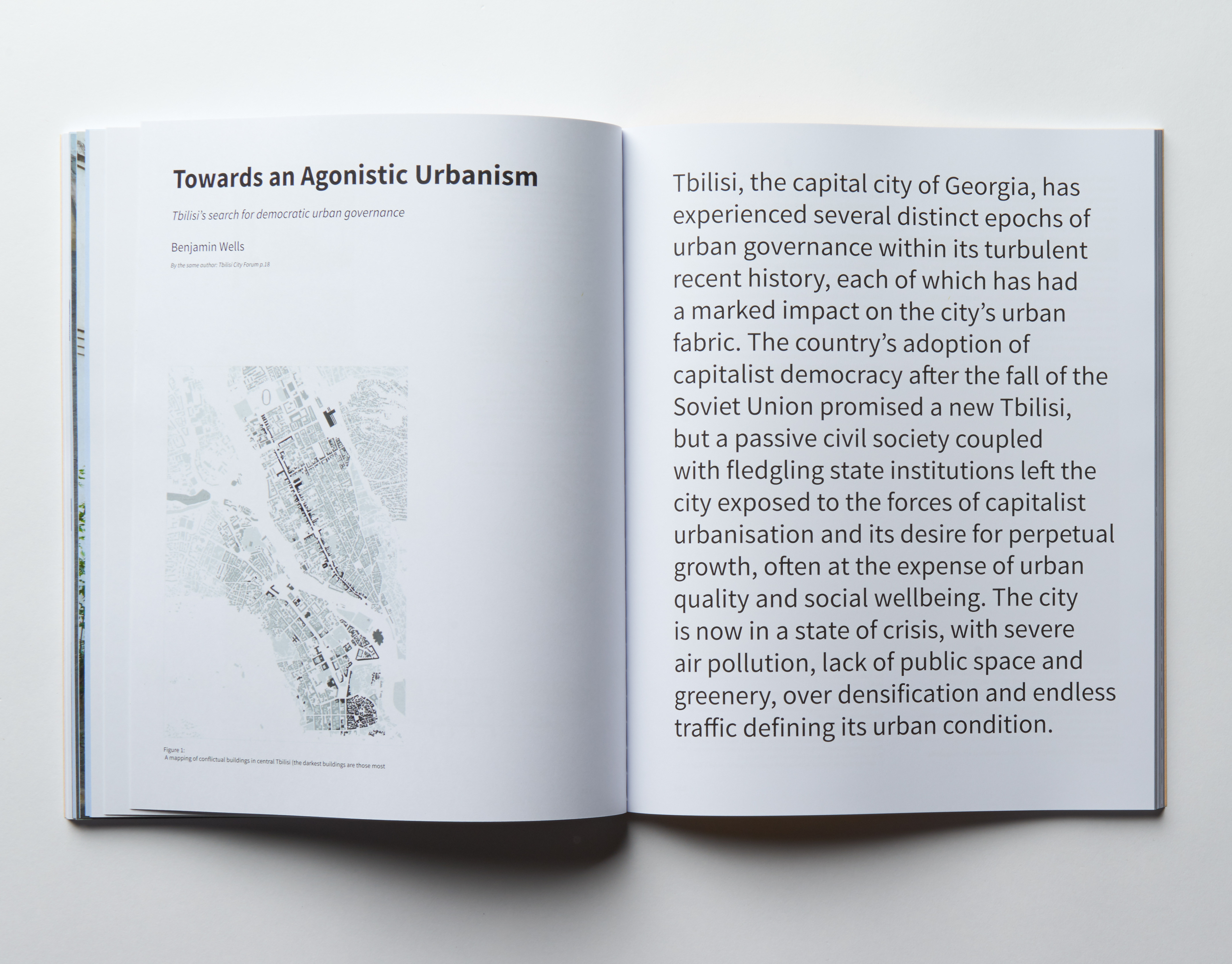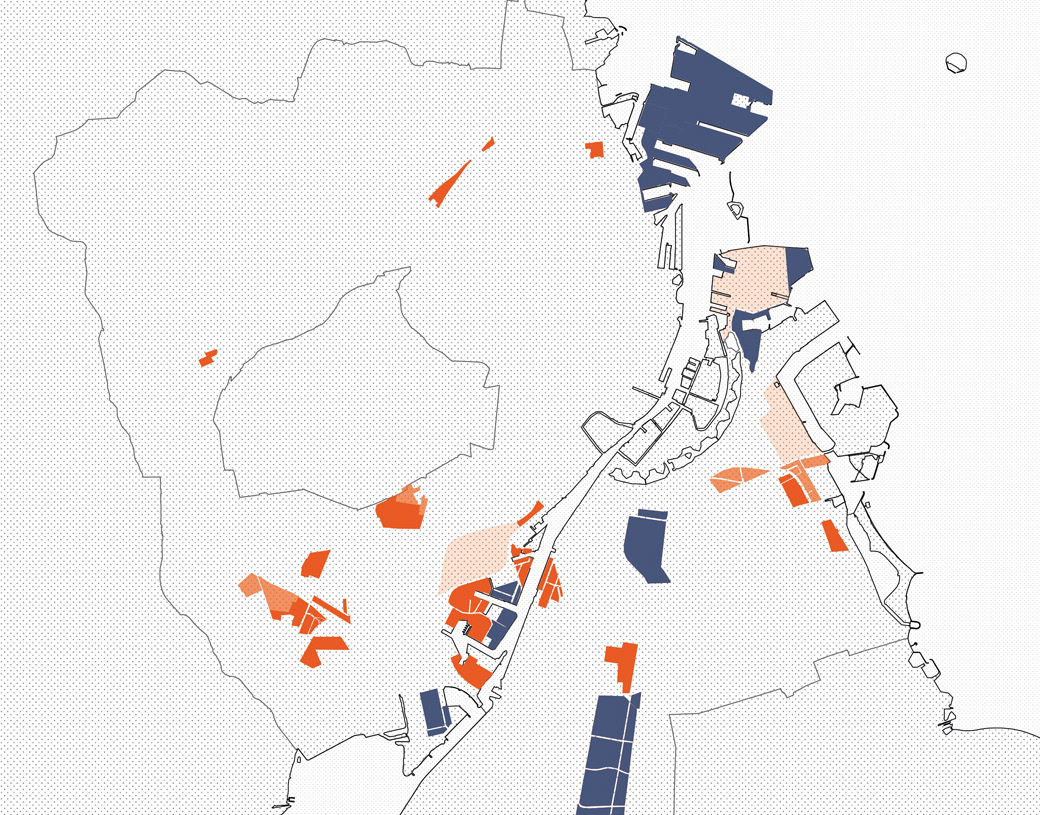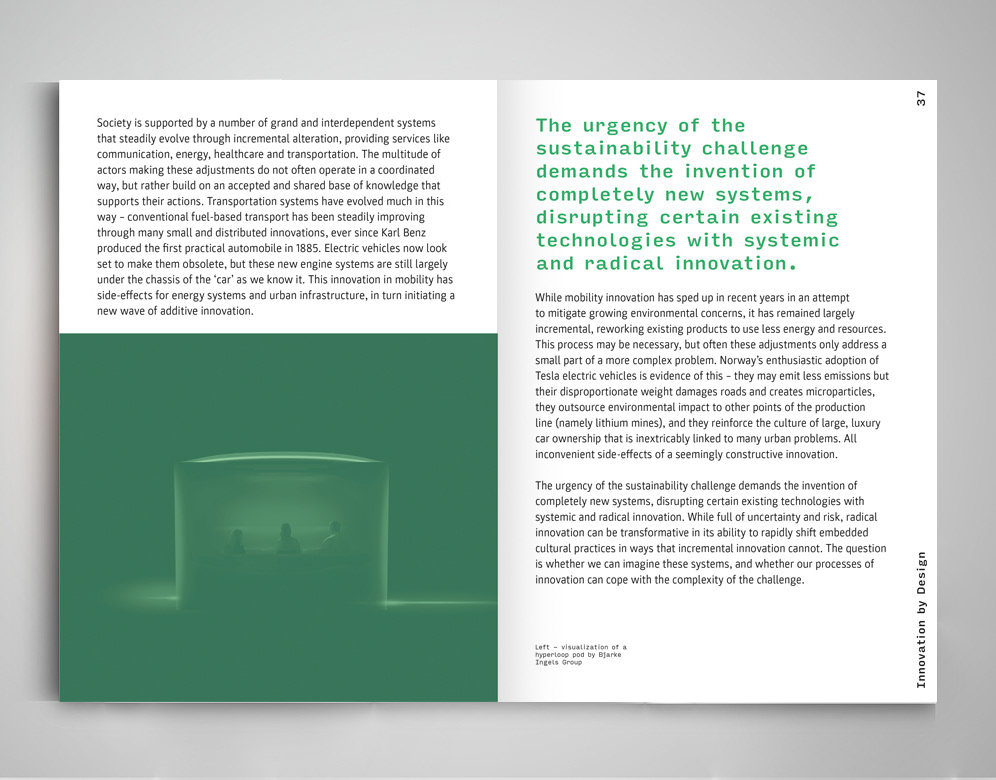Mobile Domesticity for Nomadic Retirees
By Hannah Wood and Benjamin Wells
The average life expectancy in wealthy countries has increased by over 30 years since 1850, as a result of healthier lifestyles, improved medical care and education (1). Old age can now be understood as two distinct phases of life: the ‘young-old’, who may have recently retired but can still expect 20-30 years of good health, and the ‘old-old’, who have reached an age in which they require specialist care and support (2). The young-old are liberated from the expectations of routine work and family commitments, yet are still capable, active and possess more disposable income than other demographic groups. As the number of senior citizens continues to increase, to a projected 1.5 billion over-60s worldwide by 2030 (3), our built environment will need to continually adapt to accommodate the specific needs and desires of the ‘silver economy’. From Japan to the US, China to Europe, the young-old demographic is prompting distinct and compelling new forms of urbanism.
Ageing in place, in which existing homes are adapted to suit the changing needs of their occupants, has become the preferred model of housing for the young-old, enabling individuals to maintain property ownership and a sense of belonging to a particular place or community. Yet a growing number of seniors are rejecting this status quo in search of new horizons, warmer climes and companionship. It is from this search that a unique model of senior living has emerged—that of the nomadic retiree. Members of this community are geographically dispersed and therefore hard to track down, but can be found aboard cruise ships in the Caribbean, in countless rental apartments across Europe, and in vast recreational vehicle communities traversing the US. This pioneering and growing network of young-old are rejecting a sedentary retirement in favour of a life on the move.
The ‘baby boomer’ generation, who account for the majority of today’s young-old, have experienced waves of countercultural movements in the latter half of the twentieth century that championed personal freedoms, individual exploration and alternative lifestyles. While mobile domesticity remained a fringe movement, this generation are now in a position to relive their youth, released from the demands of work with a healthy pension package in the bank. Recent advances in digital technology have streamlined booking systems, mapping services and global communication, and a growing number of online interest communities are promoting nomadism as a viable alternative to traditional retirement options. A life on the move may also be an economic decision for many seniors. With the cost of retirement homes and assisted living continuing to rise across Western cities (4), many can afford to live more lavishly in an Airbnb apartment or on a cruise ship than they ever could at home.
A stateroom and penthouse layout aboard the Crystal Serenity cruise liner. Image: Crystal Cruises
It is well established that the cruise ship industry is kept afloat by the young-old demographic, tempted by its offer of unfamiliar destinations coupled with familiar entertainment, cuisine, company and amenities onboard. Oceania Cruises now cater for ‘snowbirds’—young-old who originate from four season climates but prefer to spend their winters in warmer regions—with their two-month-plus ‘snowbird in residence’ club, allowing passengers to retire as demi-nomads and spend winters sailing around the Caribbean. Luxury cruise line Crystal Cruises now offer long-term leases of up to 40 years on their staterooms, alongside plans for colossal privately-leased 900 square metre ‘Crystal Residences’ for their wealthiest passengers. The emergence of the constant cruiser is a predominantly American trend, largely because of its relative affordability compared to alternative assisted living options in the US. Yet the trend for retiring at sea is not set to slow down anytime soon. In 2018 Chinese cruise lines attracted 2.4 million passengers, with a higher average passenger age than their global counterparts (5).
For retirees who opt for a life at sea, the cruise ship acts as an undocked floating city, complete with amenities, a like-minded community and a full schedule of entertainment, activities and performances tailored for the young-old. Nomadic retirees who spend extended periods aboard often maintain a habitual lifestyle, with a personalized private cabin and regular social gatherings with familiar faces (6). Perpetual cruising represents a mode of nomadic living in which adherents are globally mobile and effectively stateless, while retaining the comforts of a private residence. This young-old community is both connected to the world yet remarkably disconnected, defined as it is by the particular socioeconomic status of its members and their self-imposed isolation from other demographic groups. If the young-old retain their taste for long-term cruising, cruise line companies will likely tailor their accommodation offers specifically for this age group, and may begin to provide specialised medical care and amenities onboard.
A Crystal Cruise ship in Dubrovnik, Croatia. Image: Crystal Cruises.
Other technologically literate retirees are discovering the benefits of the sharing economy, and now account for the fastest growing demographic on the Airbnb home rental platform, with bookings made by guests aged 60+ growing 66% last year (7). A series of online guides written by Debbie and Michael Campbell—a couple in their late ‘60s influential in the nomadic retirement community through their blog ‘The Senior Nomads’—aim to inform hosts how to cater specifically to senior guests. They advise honesty concerning the number of steps to the front door and the quality of local transport connections, as well as lowering short-term rental prices below the market rate to attract seniors travelling full-time. As Airbnb moves into the home design sector (8) there is likely to be an increase in rental homes and homeshares designed to prioritize accessibility and comfort, specifically with the young-old in mind.
Alternative online platforms such as the ‘Freebird Club’ cater solely to the senior travelling and hosting community. According to founder Peter Mangan, the Club aims to address loneliness and social isolation for the young-old by enabling a nomadic lifestyle which focuses on new interactions and meaningful companionship. The Club differs from Airbnb in the emphasis it places upon the host, and whether they are a good ‘match’ for elderly guests with a lot of time on their hands. For those concerned about security when staying at a stranger’s house, the Freebird Club offers a paid membership which verifies host and guest identities, helping to overcome one of the main concerns with home sharing platforms.
A typical domestic RV fitout plan in a 22ft Taurus van. Image: Star RV.
An even more adventurous subset of retirees are self-organising communities around specific nomadic travel preferences, such as touring caravans and recreational vehicles, referred to as RV’s. Communities range from ‘The Grey Nomads’ in Australia, with their own interest newsletter and online platform, to ‘Workers on Wheels’, for job-seeking senior RV’ers in the US who opt to volunteer or work remotely to support their nomadic lifestyles. From an urban perspective these nomadic retirees are perhaps the most avant-garde in that their dwellings are fully mobile, their support infrastructure is pluggable and decentralised, and their communities are dispersed and continuously in flux.
RV communities coalesce at silver touring hotspots, temporary gatherings at which like-minded nomads have the opportunity to meet and socialise. During the peak season, sites like Quartzsite, Arizona attract senior full-time RV’ers from across America, offering the amenities and community of the suburbs without the effort required to maintain a sedentary dwelling. While most meetups reflect their inhabitants’ former middle-income lifestyles, formalised luxury gated resorts, such as Aztec RV resort in Florida, prioritise privacy and exclusivity for their senior nomads. Yet RV hotspots can cater for all young-old income levels: the concierge service and lit tennis courts of Aztec are a far cry from initiatives like Amazon’s ‘CamperForce’, a scheme to put less affluent RV’ers to work in remote distribution centres.
A key factor in RV living is the significant reduction in floorspace compared to other retirement housing options. However for most seniors, life in an RV does not mean leaving behind the domestic comforts they once enjoyed in their stationary lives. Instead, rooms are miniaturised into highly organised open-plan designs which maintain and amplify typical zones of activity. In ‘Young-Old: Urban Utopias of an Aging Society’, architect and researcher Deane Simpson makes a comparison between such RV fitouts and American suburbia, citing features such as the the extendable verandah, not dissimilar to an American porch, and the placement of deck chairs and artificial lawns (9) which exaggerate an expression of suburban homemaking. While this form of nomadic domesticity is quietly radical in its operation—embracing the spirit of Archigram’s vision of the ‘Instant City’ in which mobile residential units coalesce into temporary urban centres—it seems that everyday life in an RV is played out in a spatially and aesthetically conservative manner.
Senior RV community, Boondocking, Quartzsite, Arizona / Urban Texture. Image: Deane Simpson, Young-Old: Urban Utopias of an Aging Society.
Whether it is aboard a cruise ship, across a network of spare rooms, or behind the wheel of a recreational vehicle, nomadic retirement promises the opportunity to escape the burdens that come with a stationary property and the high costs of residential care. Senior nomads seeking more affordable lifestyles are becoming a vital source of income for many rural areas—both through expenditure and temporary work or volunteering—suggesting a mutual benefit which has the potential to shift economic focus away from city centers. Nomadic retirees are pioneering these new routes of mobile leisure, empowered by both the wealth to do so and a newfound sense of adventure.
Yet as retirement ages continue to rise, work becomes ever more precarious, and the ability to acquire assets is increasingly out of reach, a retirement on the move may not appear to be viable choice for future retirees. While a leisurely travelling old age may not be a sustainable option for most, the rise of nomadism certainly looks set to continue. As work becomes increasingly decentralised and fragmented, individuals are less constrained to single geographical locations, allowing and provoking mobile lifestyles that can escape the economic burdens of city life.
Emerging trends in nomadic retirement reveal innovative infrastructures, social networks and models of sharing which hold potential for nomadic lifestyles not based on leisure. As housing for the young-old becomes decentralised and optimised on a rolling basis, whether through a mobile dwelling or a network of static but shared ones, the value construct of conventional property is subverted. Rather than capturing common value through private property by way of its location, nomadic retirees are championing a value system based on experience, interaction and sharing. As this community grows it will further demand decentralised systems of energy, capital and culture, hinting at an unbounded urbanity without the restrictions of a traditional city. Many of these groupings utilise emerging digital networks and sharing platforms to organise their movements, enabling communities to exist virtually and gatherings to coalesce temporarily and suddenly, often based solely on a shared commitment to a nomadic lifestyle.
As more seniors opt for a life on the move, these adventurous young-old retirees are rejecting sedentary and formalised retirements in favour of constant discovery, and in doing so are paving the way for future generations of pioneering nomads.
(1) Carstensen, Laura L. ‘Why we live longer - and can still live better’, Stanford Center on Longevity, 2012.
(2) Laslett, Peter, ‘A Fresh Map of Life’, Harvard University Press, 1991. See also Deane Simpson, ‘Young-Old: Urban Utopias of an Aging Society’, Lars Muller, 2015.
(3) United Nations Department of Economic and Social Affairs Population Division, ‘World Population Ageing’, United Nations, 2015.
(4) CareScout, ‘Genworth 15th Annual Cost of Care Survey’, Genworth Financial, 2018.
(5) Spinks, Rosie, ‘Royal Caribbean is betting big on Chinese cruisers, and not just in China’, Quartz, 2018. https://qz.com/1539004/royal-caribbean-cruises-is-succeeding-in-china-where-others-have-failed/ (accessed 22nd February 2019).
(6) Verde, Tom, ‘Calling a cruise ship home’ New York Times, 2017. https://www.nytimes.com/2017/02/24/business/retiring-on-a-cruise-ship.html (accessed 22nd February 2019).
(7) Airbnb, ‘Ageless Travel: The Growing Popularity of Airbnb for the Over 60’s’, Airbnb 2018. https://press.airbnb.com/ageless-travel-the-growing-popularity-of-airbnb-for-the-over-60s/
(8) Gibson, Eleanor, ‘Airbnb's Backyard initiative to roll out house designs in 2019’, Dezeen, 2018. (accessed 22nd February 2019).
https://www.dezeen.com/2018/12/04/airbnb-backyard-initiative-samara-housing-prototype/?fbclid=IwAR2v0OaH2ATAtgohRjpsxaBJbBhKTxsOwDGhj8Lf5u0sSy3oN48MsNUIlvY (accessed 22nd February 2019).
https://www.dezeen.com/2018/12/04/airbnb-backyard-initiative-samara-housing-prototype/?fbclid=IwAR2v0OaH2ATAtgohRjpsxaBJbBhKTxsOwDGhj8Lf5u0sSy3oN48MsNUIlvY (accessed 22nd February 2019).
(9) Simpson, D., ‘Young-Old: Urban Utopias of an Aging Society’ Zürich: Lars Müller Publishers, p.487. (2015).
Hannah is an architect and writer currently living and working in East Africa. Her monthly feature column for Archinect, 'Architecture Futures', aims to explore developments in architecture within wider cultural and political discussions by bringing together critical voices on each topic. It was her research for the feature ‘Dwelling in the Golden Years: Experiments in Senior Living’ which first sparked her interest in innovations in housing for the young-old. She has since researched the topic for SPACE10 research and design lab, Copenhagen.









